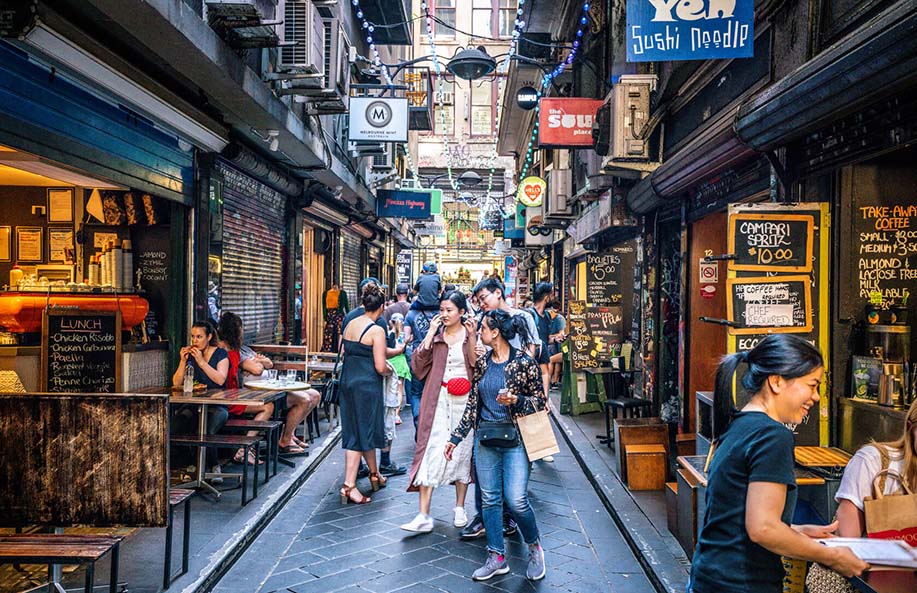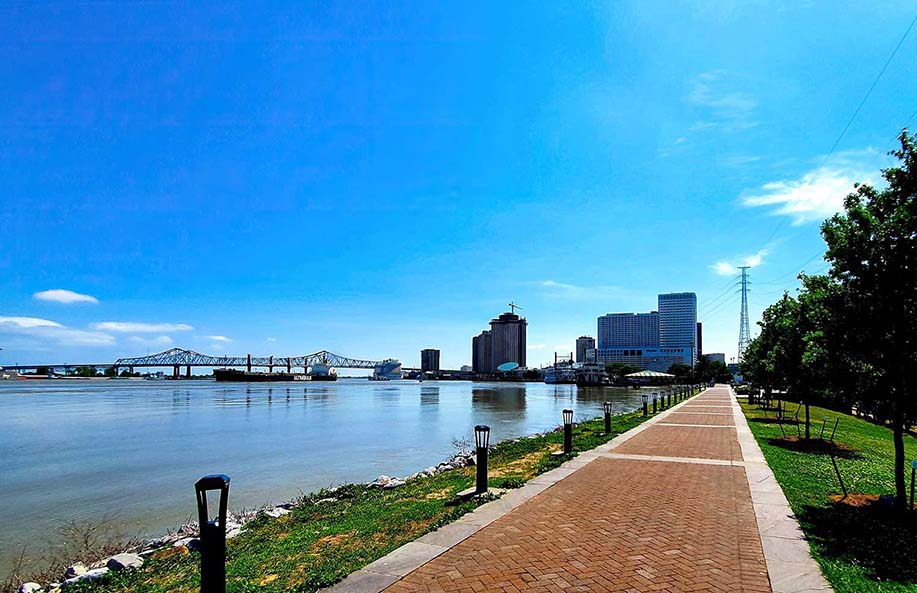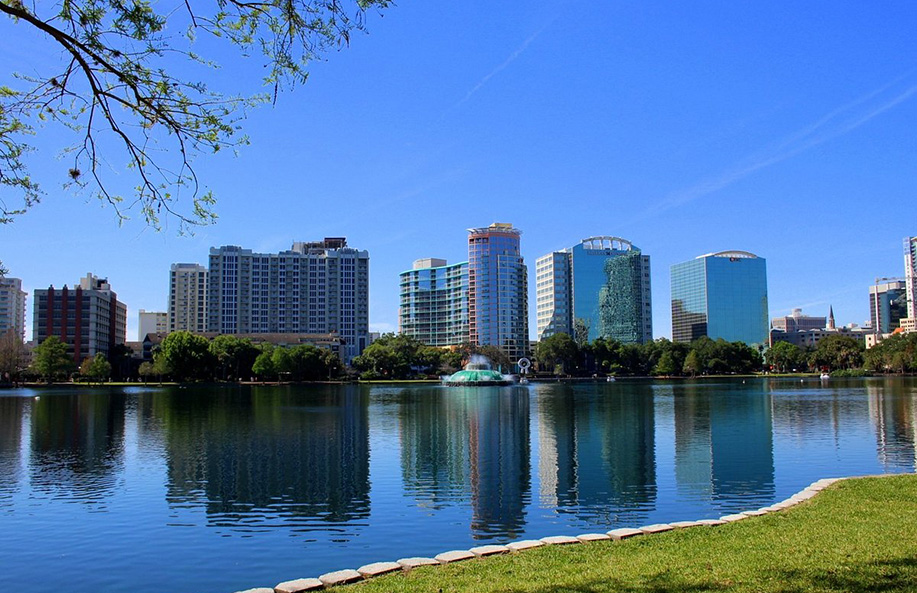Melbourne is a city brimming with culture, creativity, and a distinctive urban charm. While its skyline and grand architecture are impressive, the true spirit of Melbourne is best experienced at ground level, particularly through its intricate network of laneways. These laneways, often hidden from the main streets, are a treasure trove of street art, boutique shops, cozy cafes, and quirky galleries.
Melbourne’s Laneways
Melbourne’s laneways are more than just pedestrian pathways; they are a key part of the city’s identity. Originally designed during the Victorian era for horses and carriages, these narrow passages have evolved into dynamic spaces that showcase Melbourne’s creative heartbeat. Today, they are a canvas for street artists, a haven for food lovers, and a playground for those who enjoy exploring the unexpected.
This walking tour will take you through some of the most iconic and lesser-known laneways in Melbourne’s Central Business District (CBD). The route is designed to be leisurely, allowing you to take in the sights, sounds, and flavors of the city. You’ll encounter everything from world-class street art to hidden speakeasies, making this journey a true reflection of Melbourne’s diverse cultural landscape.
Starting Point: Flinders Lane
Your exploration begins at Flinders Lane, one of Melbourne’s most famous streets, known for its high-end boutiques, fine dining, and historic buildings. Flinders Lane runs parallel to Flinders Street, a major thoroughfare that houses Flinders Street Station, one of Melbourne’s iconic landmarks. The lane itself is a microcosm of Melbourne’s past and present, with heritage-listed buildings standing alongside modern establishments.
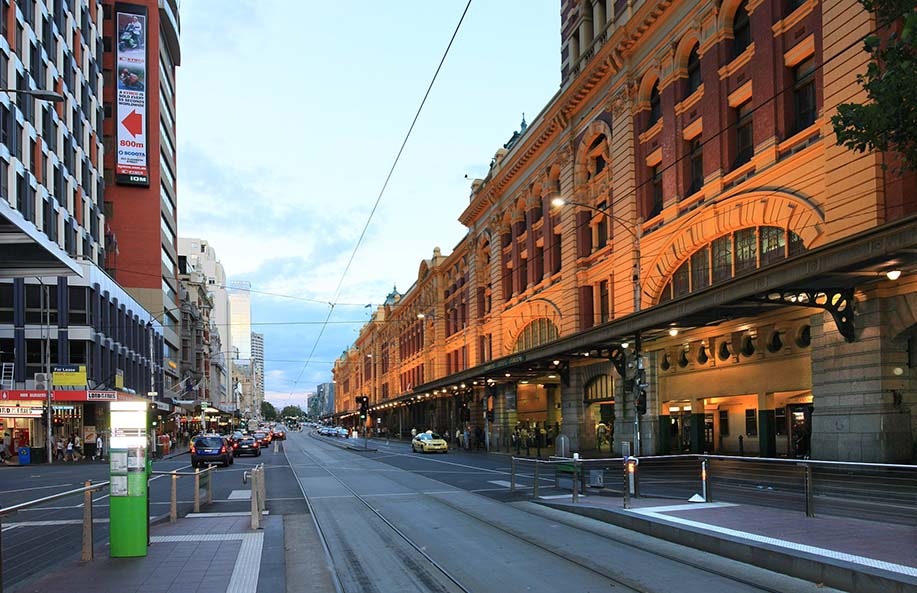
As you stroll down Flinders Lane, take a moment to appreciate the juxtaposition of old and new. The ornate facades of Victorian-era buildings tell the story of Melbourne’s gold rush prosperity, while contemporary restaurants and galleries signal the city’s forward-looking spirit. If you’re a fan of art, make sure to stop by Arc One Gallery and Anna Schwartz Gallery, two of the city’s most respected contemporary art spaces.
Degraves Street: A Café Lover’s Paradise
Just a short walk from Flinders Lane, Degraves Street is your next stop. This bustling laneway is a favorite among locals and tourists alike, known for its European-style cafes and vibrant atmosphere. As you enter Degraves Street from Flinders Street, you’ll be greeted by the smell of freshly brewed coffee and the sight of people enjoying their meals al fresco.
Degraves Street is the perfect place to grab a coffee and people-watch. The cafes here range from old-school establishments to trendy spots serving the latest in Melbourne’s innovative culinary scene. Degraves Espresso Bar is a must-visit for its vintage charm and strong coffee, while The Quarter offers a more modern take with a menu that blends classic and contemporary flavors.
Beyond its culinary delights, Degraves Street is also home to several unique shops. Campbell Arcade, accessible via a stairway in the middle of the street, is an underground passageway lined with indie boutiques, record stores, and art installations. The arcade has a distinctly retro vibe, making it a cool spot to explore for vintage lovers and those seeking something a little different.
Hosier Lane: The Street Art Mecca
No tour of Melbourne’s laneways would be complete without a visit to Hosier Lane. Just a few minutes’ walk from Degraves Street, this laneway is the city’s most famous street art destination, attracting artists and admirers from all over the world. The walls of Hosier Lane are a constantly evolving canvas, with new pieces appearing almost daily. The art ranges from large-scale murals to intricate stencils and tags, each contributing to the lane’s vibrant and ever-changing character.
As you walk through Hosier Lane, take your time to appreciate the diversity of styles and messages on display. The art here often reflects social and political themes, giving you a glimpse into the issues that resonate with Melbourne’s artistic community. Keep an eye out for works by well-known street artists like Rone, Adnate, and Vexta, whose contributions have helped shape the lane’s reputation.
If you’re interested in learning more about the street art scene, consider joining one of the guided street art tours that frequent Hosier Lane. These tours are led by local artists and provide valuable insights into the techniques, histories, and stories behind the artworks. However, even on a self-guided tour, you’ll find plenty to marvel at and discuss.
ACDC Lane and Duckboard Place: Rock and Roll History
Next on the tour is ACDC Lane, named after the legendary Australian rock band AC/DC. This laneway, along with the adjoining Duckboard Place, is steeped in Melbourne’s musical history. The walls here are covered in rock-inspired street art, and the area has long been associated with the city’s live music scene.
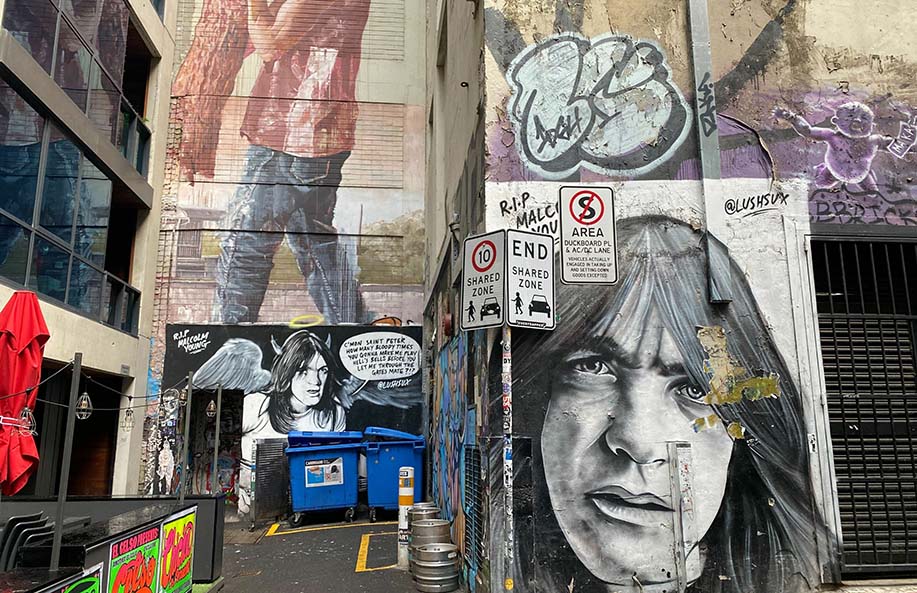
ACDC Lane is home to Cherry Bar, one of Melbourne’s most iconic live music venues. Known for its intimate setting and eclectic lineup, Cherry Bar is a must-visit for music lovers. Even during the day, when the bar is closed, the laneway pulses with the energy of countless gigs that have taken place there. The street art in ACDC Lane often features portraits of rock legends and homages to Melbourne’s vibrant music culture.
Duckboard Place, just around the corner, is equally rich in history. The laneway was originally part of a factory complex and later became a hub for Melbourne’s post-war hospitality industry. Today, it’s a hotspot for street art and home to several popular restaurants. Pastuso, a Peruvian restaurant, offers a taste of South America in the heart of Melbourne, while Lee Ho Fook is known for its contemporary Chinese cuisine. Both are excellent choices for a meal if you’re feeling peckish after exploring the laneways.
Centre Place: A Slice of Melbourne’s Subculture
From ACDC Lane, it’s a short walk to Centre Place, another of Melbourne’s iconic laneways. Centre Place is often described as the epitome of Melbourne’s laneway culture, with its gritty, graffiti-covered walls, eclectic mix of cafes, and vibrant energy. The laneway is narrow and bustling, filled with the sound of clinking coffee cups, the smell of fresh pastries, and the hum of conversation.
Centre Place is a great spot to soak up the city’s unique vibe. Grab a coffee from Jungle Juice Bar or a sandwich from Sally’s Kitchen, then find a seat at one of the outdoor tables to watch the world go by. The laneway’s walls are a tapestry of street art, posters, and stickers, each adding to the sense of creative chaos that defines the space.
As you walk through Centre Place, you’ll also notice several small shops selling everything from handmade jewelry to vintage clothing. These boutiques offer a glimpse into Melbourne’s thriving indie retail scene, where local designers and artisans showcase their work. Whether you’re looking to pick up a unique souvenir or simply browse, Centre Place is a treasure trove of hidden gems.
Block Arcade and Block Place: A Step Back in Time
Leaving Centre Place, head towards Block Arcade, one of Melbourne’s most beautiful and historic shopping arcades. Built in the 1890s, Block Arcade is a stunning example of Victorian-era architecture, with its mosaic-tiled floors, glass-domed ceiling, and intricate detailing. The arcade is home to several high-end boutiques, cafes, and specialty shops, making it a popular destination for both shopping and sightseeing.
As you walk through Block Arcade, take a moment to appreciate the craftsmanship that went into its construction. The arcade has been meticulously preserved, offering a glimpse into the opulence of Melbourne’s past. Be sure to visit Haigh’s Chocolates, an iconic Australian chocolatier, and Hopetoun Tea Rooms, a historic tea room famous for its decadent cakes and pastries. While the tea room often has a queue, it’s well worth the wait for a taste of old-world charm.
Adjacent to Block Arcade is Block Place, a narrow laneway lined with cafes and restaurants. Block Place is a more intimate space compared to the grand arcade, but it’s just as charming. The laneway is a popular spot for outdoor dining, with tables spilling out onto the cobblestones and fairy lights creating a warm, inviting atmosphere. If you’re looking for a place to rest your feet and enjoy a meal, Block Place offers plenty of options.
Union Lane: A Hidden Gem of Street Art
From Block Arcade, make your way to Union Lane, a lesser-known but equally impressive destination for street art lovers. Union Lane runs between Bourke Street Mall and Little Collins Street, and while it’s easy to miss, it’s well worth seeking out. The laneway is a narrow, graffiti-covered alley that showcases a wide range of street art styles, from intricate stencils to bold murals.
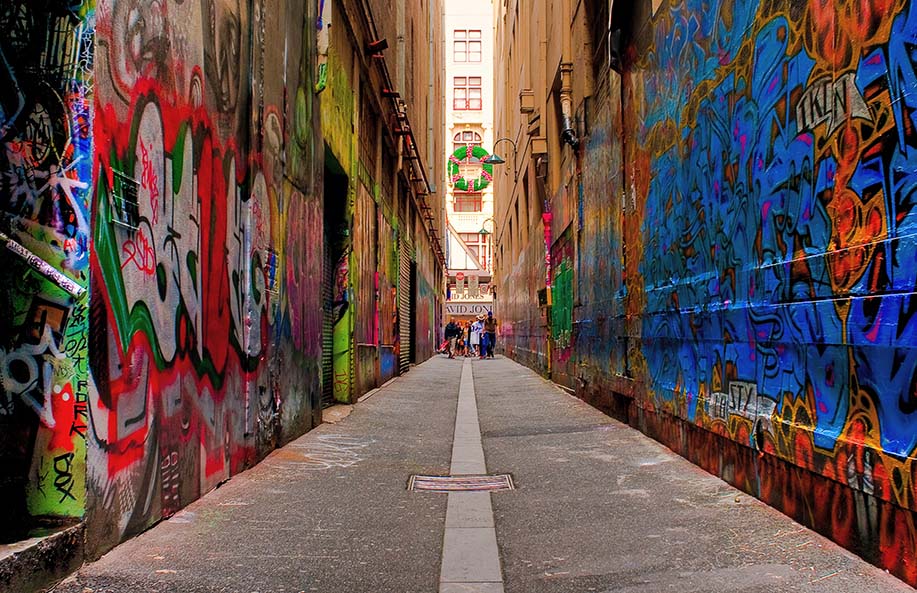
Union Lane is often quieter than the more famous Hosier Lane, making it a great spot to explore without the crowds. The art here is just as diverse and vibrant, with new pieces appearing regularly. As you walk through the lane, you’ll notice how the artwork changes, reflecting the dynamic nature of Melbourne’s street art scene. The laneway is a favorite among local artists, who often use it as a canvas for experimentation and collaboration.
While Union Lane may not have the same level of fame as Hosier Lane, it offers a more intimate and immersive street art experience. It’s a place where you can take your time, really look at the details, and perhaps even catch an artist in the act of creating.
Finishing at Hardware Lane: A Culinary Delight
Your self-guided tour concludes at Hardware Lane, a laneway known for its vibrant dining scene. Located between Bourke and Little Bourke Streets, Hardware Lane is lined with restaurants offering a variety of cuisines, from Italian and Greek to modern Australian. The laneway comes alive in the evening, with live music, outdoor seating, and a festive atmosphere.
Hardware Lane is the perfect place to end your day of exploring with a delicious meal. If you’re in the mood for Italian, Il Nostro Posto is a popular choice, known for its traditional pasta dishes and warm hospitality. For something more contemporary, The Hardware Societe offers a modern twist on classic dishes, with a focus on fresh, seasonal ingredients. No matter what you’re craving, Hardware Lane has something to satisfy your appetite.
As you enjoy your meal, take a moment to reflect on your journey through Melbourne’s laneways. Each one offers a unique slice of the city’s culture, from the artistic expression of Hosier Lane to the historic charm of Block Arcade. Together, they create a mosaic of experiences that capture the essence of Melbourne.
Practical Tips for Your Laneway Adventure
- Timing: The best time to explore Melbourne’s laneways is during the day, when the cafes are open, and the streets are bustling with activity. Early morning or late afternoon are ideal times to avoid the largest crowds, especially in popular spots like Hosier Lane.
- Footwear: Comfortable shoes are a must, as you’ll be doing a fair amount of walking on cobblestone streets and uneven surfaces.
- Weather: Melbourne’s weather can be unpredictable, so it’s wise to carry an umbrella or wear layers, especially if you’re visiting in the cooler months.
- Respect the Art: While the street art in Melbourne’s laneways is meant to be enjoyed by all, remember that these are public spaces. Avoid touching the artwork and be mindful of others who are also there to admire the art.
- Photography: Melbourne’s laneways are incredibly photogenic, so don’t forget your camera! Whether you’re snapping pictures of the street art, capturing the vibe of a busy cafe, or documenting the historic architecture, there’s plenty to photograph.
Melbourne’s laneways are a testament to the city’s rich cultural heritage and vibrant artistic spirit. Each laneway tells its own story, offering visitors a chance to experience the city’s diverse character up close.
